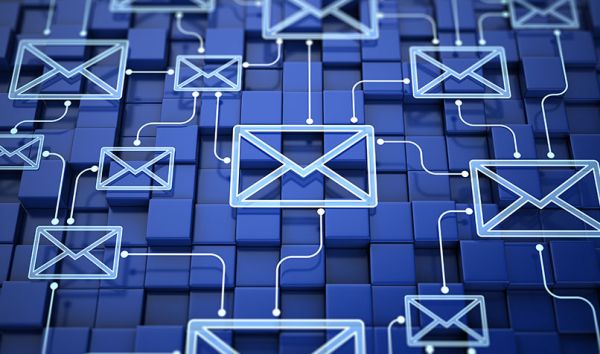Is email overload making you unproductive? Email management expert Tim Hines shares his tips for keeping an eye on your inbox.
At a glance
Without a well-defined management system, mailbox overload can degrade performance.
Achieving "zero inbox" doesn't have to be the end goal if you have a system in place to prioritize, categorize, and constantly monitor your inbox.
There are simple steps you can take to change habits and routines to prevent email from encroaching on tasks that require focus.
Much of our professional life revolves around email. On average, a professional processes 120 emails per day, which can cause inbox overload and often interfere with productive and valuable work.
According to Tim Hines, director of Spacemakers and creator of the Email Ninja training course, "When you get dozens of emails a day, you need a workflow and habits to keep your system going."
“There aren't many hacks and automations you can implement to help you manage large volumes of email,” Hines says.
"The key to success in email management is conscious, intentional behavior and habits."
Hines shares these practical tips on how to stay on top of your emails.
Turn off new mail notifications
“If you have email alerts turned on all the time for all of your devices, then you are classic Pavlovian attuning to your technology,” Hines says. “You may not even understand how your habits have shaped you.
“In virtually every role and position we face – unless you work in media, executive assistant or front desk – people can always turn off their alerts and be more aware when they check their email. . »
Create a simple email storage system
"Don't treat your inbox like a box for everything, like a file cabinet, archive box, or to-do list," Hynes recommends. "You should have a workflow and organization system in place to categorize your emails, even if you haven't achieved 'zero inbox'."
The idea of a zero mailbox is that you should never have any emails in your mailbox. Instead, the mailbox should act as an input tray. You start by thinking about what to do with the email and then act on it when you're ready.
Hynes recommends starting with a simple system so you don't overwhelm yourself with too many mail folders.
Action Folder: Emails that will take more than two minutes of your time.
Waiting Folder: Emails that you are waiting for a response to.
Reading Folder: Emails with interesting articles, magazine articles, blogs - it's like an email bookshelf.
Archive folder: Emails that require no action. Here you can store emails and search for them if necessary.
Trash: Deleted emails that require no action. The ease of using just five folders makes organizing email much easier, Hynes says.
Practice Self Control
“Is the value of your job in checking and replying to emails every five seconds? Almost always the answer is no, but that's what we do,” Hines says.
Hines points to research that most knowledge workers manage to check email three to four times a day.
“If you check your email at regular intervals throughout the day, you will be able to respond quickly. Someone will hear from you within three to four hours, which is acceptable, instead of responding and checking email 40 times a day.”
“Compulsion to check email is a battle that even the most experienced zero subscribers struggle with. One of the reasons for this is that we have neurotransmitters that release dopamine in small doses every time we see a new email and respond to it,” Hines explains.
On average, it takes a person 23 minutes to fully return to a task after a break. Hynes has a solution for those who are struggling to resist inbox grazing.
“Check your email hourly,” he says. "It's a simple habit trigger and you give yourself uninterrupted time, 45 to 60 minutes, to do something educational and valuable."
CPA Library Resource: Productivity: Get Motivated, Organized, and Get Things Done. Read now.
Don't start the day with email
The best way to increase Hynes productivity is to rethink your morning routine.
“Spend the first few minutes looking at your
Actions folder and what needs to be done and prioritized, and then go to your inbox. By starting with an action folder, you're more likely to prioritize email.
"The inbox is incredibly dynamic and if you manage your to-do list in your inbox, you need to have a very high discipline not to check for new incoming emails."
Reset mailbox to zero
How to get started with a zero mailbox if you have tens of thousands of emails in your mailbox?
“When you reset to ‘zero in’ and start a new workflow, you are actually creating a trigger in your brain that allows you to reach zero and stay there.”
“Choose all but the most urgent emails in your inbox and simply move them to your document storage folder to start from inbox zero,” Hines says. “Then make a plan for the week to review your sent emails by moving any pending emails to your action folder for follow up.
“Zeroing the mailbox is not the end goal for me. It's about how to take control and organize email outside of the inbox."

